Up until this point in the project, we have been surveying the research litterature for information on in-car interfaces, various kinds of interaction techniques and test results from related experiments.
In this post we will give a brief overview of some of the information collected during the survey, as well as a few examples of related commercial products and designs.
A number of articles focus on the implications of interacting with secondary devices (phones, navigation, radios etc.) while driving a vehicle. These implications include lack of concentration, time of attention off the road as well as other factors influencing the drivers ability to safely control the vehicle through traffic.
Experiments with different interaction techniques have been performed, in order to find the one(s), best suited for in-vehicle use. Among the researched techniques are haptic/physical, touch and gesture interfaces as well as voice recognition and vision tracking.
Research indicate that the voice and gesture based approaches are challenged by the fact that users have to remember a large number of gestures in order to operate the interface. Touch screen interfaces are not in the same way limited by this, as the display gives a visual clue of the available functions and to some extent also the possible actions.
Some suggest that a touch screen with support for gesture interaction is a promising approach in this particular use situation, which is not really surprising as the recent boom in smartphone sales, makes this type of interface common and well known among users.
The physical layout of the in-car controls and displays have been subject to experimentation as well and results indicate that input controls in the steering wheel work well and that displays should be placed in front of the driver or immediately to the right of the steering wheel (in left steered cars).
These results are good news for us, as the physical layout of the interior in the car in this project places the in-car interaction within the circumference of the steering wheel.
Below are a few screen dumps from a recent tv program about electrical cars in Denmark. These dumps are from a section about the specific car we’re working on.
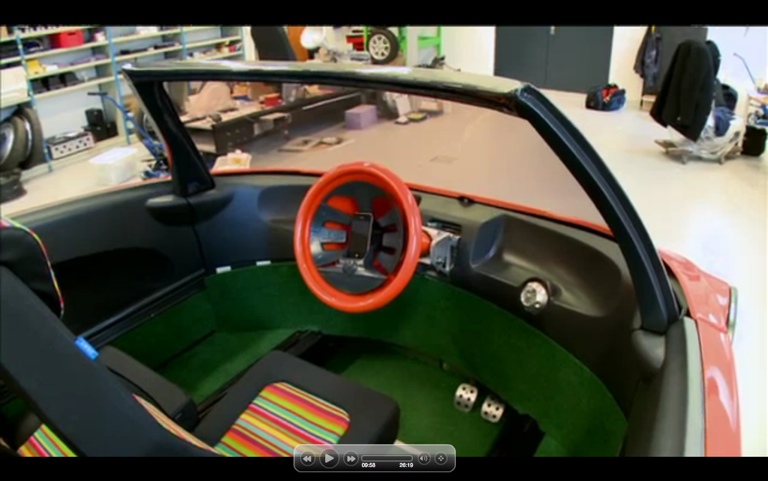
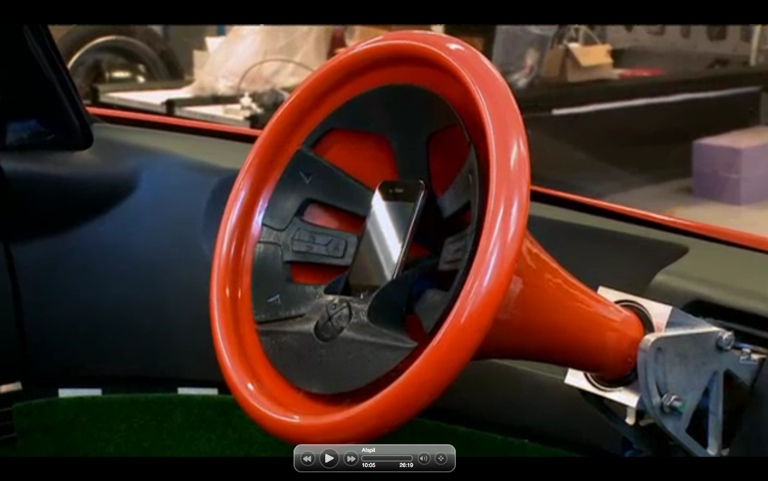
The concept of placing a smartphone in the center of the steering wheel and using it as the primary instrumentation display isn’t new, as Citroën presented the concept car Cactus in 2007, which does the same thing.
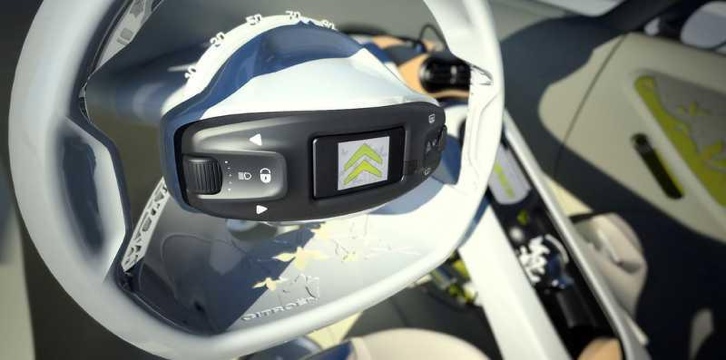
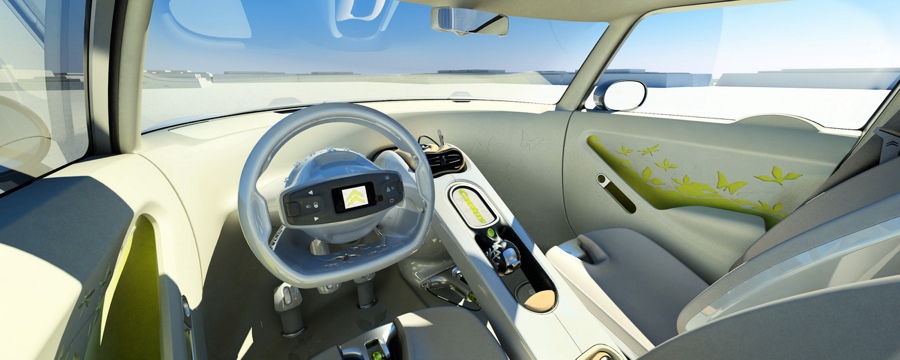
To mention a few other examples of car-smartphone integration, the Nissan Leaf electrical car has a matching smartphone app, which, amongst other things, shows the current charge level of the batteries and let’s the user control the in-car climate from a distance.
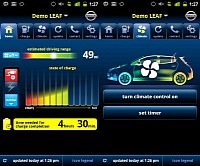
Another example is a retrofittable product which lets the user find, lock and start the car from a smartphone app. [http://www.voxcarlink.com]
Our further surveying might focus on cognitive psychology, as well as experiential factors of having a smartphone closely coupled to a car, in and outside the vehicle.





